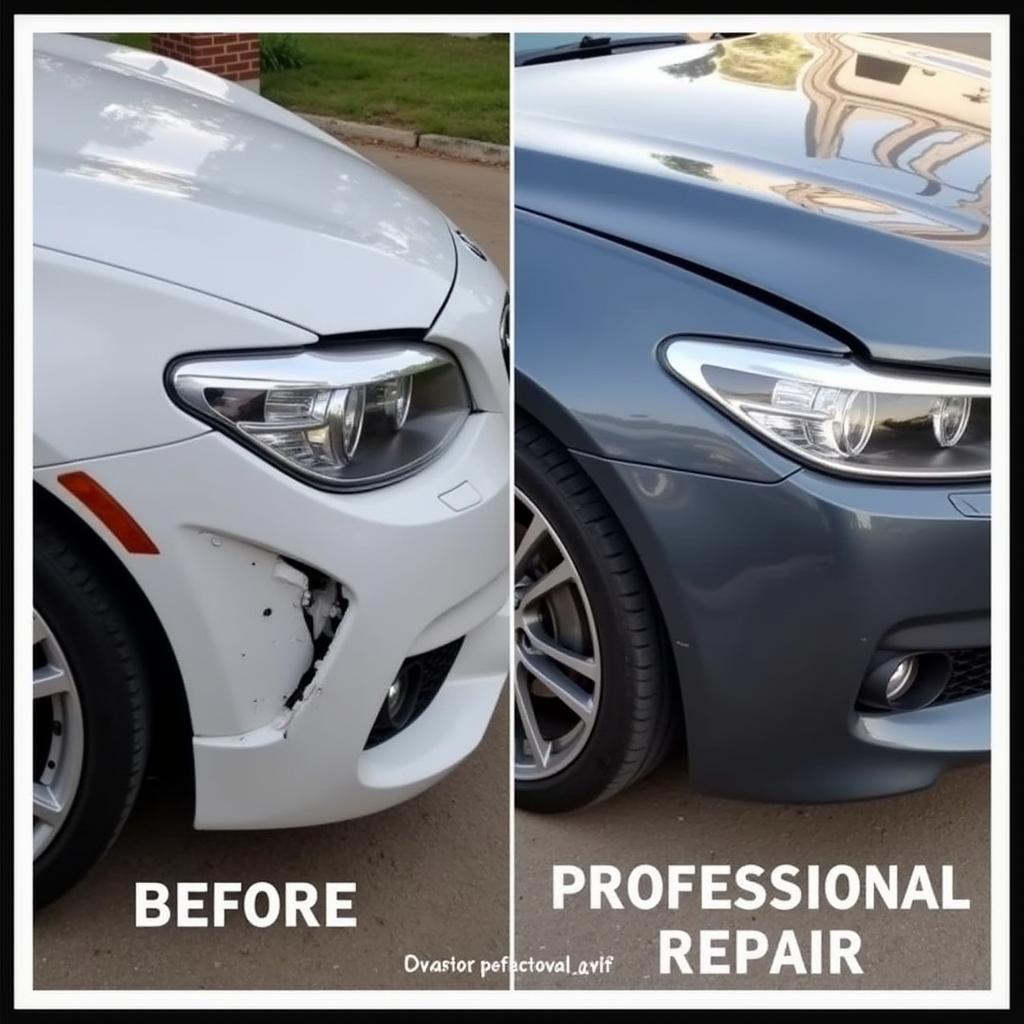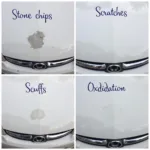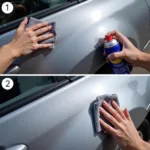Car body repair, as the name suggests, encompasses all the techniques and processes involved in restoring a vehicle’s exterior to its original condition after damage. Whether from a minor fender bender or a more significant collision, understanding the intricacies of car body repair is essential for both vehicle owners and industry professionals. This guide dives deep into the world of car body repair, going beyond a simple Wikipedia definition to provide valuable insights and practical knowledge.
Understanding the Basics of Car Body Repair
Car body repair is more than just fixing dents and scratches. It involves a complex interplay of skills, tools, and materials to ensure the structural integrity and aesthetic appeal of a vehicle. This process can include anything from minor paint touch-ups to major panel replacements. Knowing the different aspects involved allows you to make informed decisions when your car needs attention.
Types of Car Body Damage
Understanding the type of damage your car has sustained is the first step towards effective repair. Common types include:
- Dents: These are depressions in the body panels caused by impacts. Minor dents can often be repaired using paintless dent repair (PDR) techniques.
- Scratches: These range from superficial clear coat scratches to deep gouges that expose the metal underneath. Repair methods vary depending on the severity of the scratch.
- Cracks and Tears: More severe impacts can cause cracks or tears in the body panels, often requiring patching or replacement.
- Rust: Corrosion can weaken the car’s structure and requires prompt attention. Repairing rust damage involves removing the affected area and applying a rust inhibitor.
The Car Body Repair Process
A typical car body repair process involves several key steps:
- Damage Assessment: A thorough inspection to identify the extent of the damage.
- Part Removal: Damaged panels or components are removed to access the affected area.
- Repair or Replacement: Depending on the severity, the damaged part is either repaired or replaced.
- Surface Preparation: The repaired area is sanded and prepared for painting.
- Painting and Finishing: Primer, paint, and clear coat are applied to match the original finish.
- Reassembly and Quality Control: The repaired parts are reassembled, and a final inspection ensures the quality of the repair.
Beyond the Basics: Advanced Car Body Repair Techniques
As automotive technology advances, so do car body repair techniques. Modern vehicles often feature complex materials and construction methods, requiring specialized repair procedures.
Working with Different Materials
From high-strength steel to aluminum and composites, understanding the properties of different materials is crucial for effective car body repair. Each material requires specific tools and techniques.
Computerized Diagnostics and Repair
Modern car body repair shops utilize computerized diagnostic tools to assess damage and ensure precise repairs. These tools help identify hidden damage and ensure structural integrity.
“Using the right tools and techniques is essential for achieving a high-quality repair, especially with today’s advanced materials,” says John Smith, Automotive Repair Specialist at Smith Auto Body. “Computerized diagnostics play a vital role in ensuring accuracy and efficiency.”
DIY vs. Professional Car Body Repair
While some minor repairs can be tackled by DIY enthusiasts, more complex damage requires the expertise of a professional. Knowing when to seek professional help is crucial.
When to Call a Professional
If the damage involves structural components, airbags, or advanced safety systems, it’s essential to consult a qualified car body repair technician. Attempting these repairs yourself can compromise the safety and performance of your vehicle.
“Safety should always be the top priority,” adds Maria Garcia, Lead Technician at Garcia Auto Repair. “When in doubt, it’s always best to consult a professional. They have the expertise and equipment to ensure a safe and proper repair.”
 Comparison of DIY and professional car body repair
Comparison of DIY and professional car body repair
Conclusion
Car body repair is a multifaceted field that requires a combination of skill, knowledge, and precision. Whether you’re researching for a simple scratch repair or a major collision repair, understanding the basics and advancements in car body repair empowers you to make informed decisions. Knowing when to seek professional help and understanding the repair process are key to ensuring the longevity and safety of your vehicle. Remember, proper car body repair goes beyond just aesthetics – it’s crucial for maintaining the structural integrity and overall safety of your car.
FAQ
- What is the average cost of car body repair? The cost varies depending on the extent of the damage and the type of vehicle.
- Can I repair rust damage myself? While minor surface rust can be treated with DIY methods, significant rust damage requires professional attention.
- What is paintless dent repair (PDR)? PDR is a technique used to remove minor dents without repainting.
- How long does car body repair typically take? The timeframe varies depending on the complexity of the repair.
- How do I choose a reputable car body repair shop? Look for certified technicians, positive reviews, and warranties.
- What is the difference between body filler and body putty? Body filler is used to fill larger dents, while body putty is used for smaller imperfections.
- How do I protect my car’s paint from scratches? Regular waxing and careful washing can help prevent scratches.
Need support? Contact us via WhatsApp: +1(641)206-8880, Email: cardiagtechworkshop@gmail.com. We have a 24/7 customer service team.


